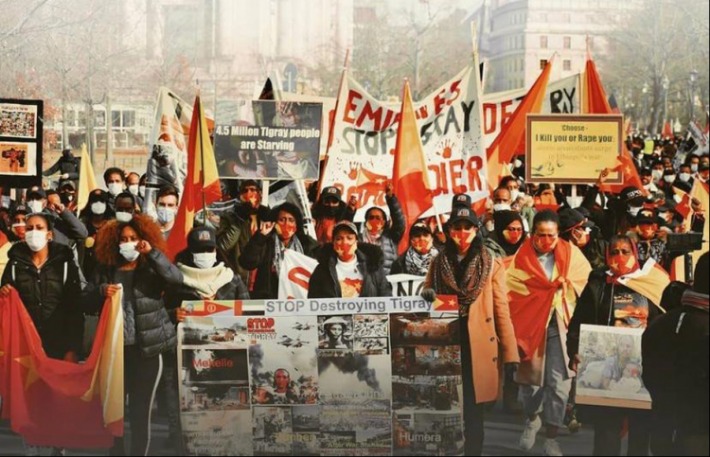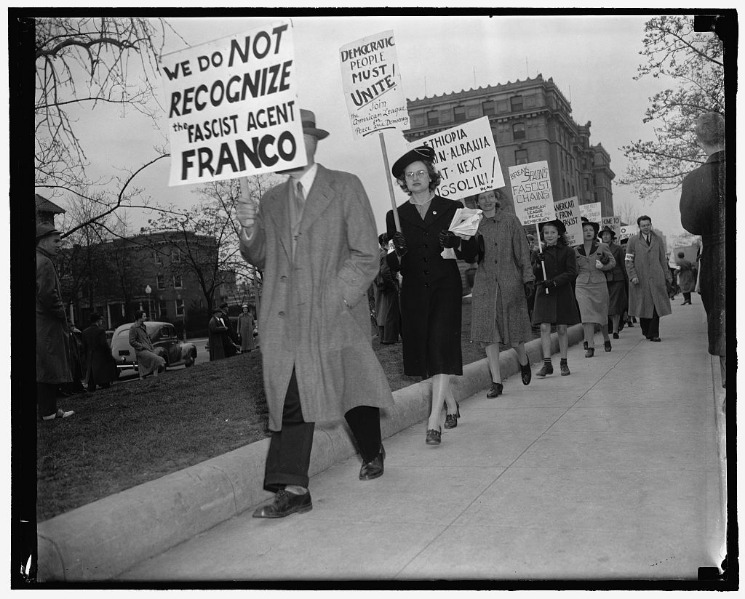Historical Background of Ethiopia
Ethiopia, one of Africa’s oldest nations, boasts a rich historical background marked by ancient kingdoms, remarkable cultural heritage, and periods of imperial rule. Its history is characterized by the rise and fall of powerful dynasties, early Christian civilization, and a tradition of resistance against external influences. Over the centuries, Ethiopia has experienced significant social and political transformations, setting the stage for contemporary challenges, including conflicts and civil unrest that continue to shape its national narrative.
Pre-Colonial Era and Empire Foundations
The historical background of Ethiopia is rich and complex, spanning thousands of years and encompassing a variety of cultural, political, and territorial developments. The region is often considered one of the most ancient places of human civilization, with evidence of early human ancestors and early kingdoms dating back to prehistoric times.
During the pre-colonial era, Ethiopia was characterized by a series of powerful kingdoms and empires, most notably the Kingdom of Aksum, which emerged around the 1st century AD. The Aksumite Empire was a major trading power and a significant center of Christianity after the adoption of the faith in the 4th century. This era laid the foundations for a unique Ethiopian identity, centered around Christianity, the monarchy, and a distinctive script and culture.
The foundation of Ethiopia as an empire was marked by the establishment of the Solomonic Dynasty, which traces its origins to the biblical King Solomon and the Queen of Sheba. This dynasty played a crucial role in shaping the country’s political and religious landscape, maintaining independence from foreign colonial powers during the so-called “Scramble for Africa.” Ethiopia’s ability to resist colonization and its strong centralized monarchy contributed to its distinct historical trajectory, which influences conflicts and territorial issues that have persisted into the modern era, including the ongoing civil war.
20th Century Political Developments
The 20th century was a tumultuous period in Ethiopia’s history, marked by significant political upheavals and conflicts that ultimately led to prolonged civil war. The empire, historically ruled by emperors such as Menelik II and Haile Selassie I, faced increasing internal and external pressures due to modernization efforts, colonial ambitions, and social unrest. In the 1930s, Italy’s invasion and occupation under Mussolini disrupted stability, but Ethiopia’s resilient resistance became a symbol of anti-colonial sentiment. After World War II, Haile Selassie was restored to power; however, his reign faced growing opposition from various revolutionary groups seeking land reform and political change. The 1974 revolution deposed the emperor, establishing a Marxist-Leninist Derg regime led by Mengistu Haile Mariam, which precipitated a brutal civil war involving multiple factions and ethnic militias. The conflict persisted into the 1990s, culminating in the fall of the Derg and the rise of the Ethiopian People’s Revolutionary Democratic Front (EPRDF), which aimed to create a federal system accommodating Ethiopia’s diverse ethnic groups. These political developments, characterized by authoritarian rule, revolutionary upheavals, and ethnic conflicts, laid the groundwork for the ongoing civil conflict in modern Ethiopia.
Causes of the Ethiopian Civil War
The Ethiopian Civil War was a complex and multifaceted conflict rooted in a variety of political, social, and economic causes. Long-standing ethnic tensions, disputes over land and resources, and the struggle for power among different groups significantly contributed to the outbreak of violence. Additionally, colonial legacies, oppressive government policies, and the desire for greater autonomy fueled unrest, setting the stage for a prolonged and devastating civil war throughout Ethiopia’s history.
Political Oppression and Human Rights Violations
The Ethiopian Civil War was fueled by a combination of political oppression and widespread human rights violations, which created deep-seated resentment and unrest among various ethnic groups and political factions. The authoritarian regimes ruling Ethiopia historically suppressed political dissent, silenced opposition voices, and maintained power through violence and intimidation. These oppressive tactics led to frustration and anger among marginalized communities, especially ethnic minorities seeking autonomy and greater representation. Human rights violations, including torture, extrajudicial killings, and displacement of populations, further exacerbated tensions. The lack of political freedoms and persistent abuse created a volatile environment that ultimately erupted into conflict, as various groups fought to assert their rights and achieve self-determination. The long-standing systemic oppression and neglect of human rights were key causes that set the stage for the outbreak of the civil war in Ethiopia.
Ethnic and Regional Tensions
The Ethiopian Civil War was primarily fueled by deep-rooted ethnic and regional tensions that challenging the country’s unity. Historically, Ethiopia is a diverse nation composed of numerous ethnic groups with distinct languages, cultures, and political aspirations. These differences often led to friction and dissatisfaction, especially when marginalized groups sought greater autonomy or equal treatment. The central government’s policies, which sometimes favored certain ethnic groups over others, exacerbated these tensions and contributed to feelings of disenfranchisement among various communities. Additionally, competition over resources and political power further intensified regional conflicts. The struggle for self-determination and the quest to address historical injustices played significant roles in fueling hostility and unrest, ultimately igniting full-scale civil conflict within Ethiopia.
Economic Disparities and Land Inequality
The Ethiopian Civil War was fueled by deep-rooted economic disparities and land inequality, which created significant social tensions and frustrations among the population. Wealth and resources were concentrated in the hands of a minority, primarily the landowning elite, while the majority of Ethiopians, including peasants and marginalized groups, faced poverty and limited access to land and opportunities. These economic imbalances intensified regional and ethnic divisions, fueling resentment and resistance against the existing political structure. Land inequality particularly contributed to unrest, as many communities struggled to secure fair access to land for farming and livelihoods, further exacerbating social grievances. The accumulation of these issues ultimately led to widespread unrest, rebellion, and conflict, culminating in the prolonged Ethiopian Civil War.
Influence of External Forces
The Ethiopian Civil War was primarily caused by deep-rooted political, ethnic, and economic tensions within the country. Discontent with central authority, ethnic inequality, and regional disparities fueled unrest among various groups, leading to demands for greater autonomy and self-determination. The overthrow of Emperor Haile Selassie in 1974 and the subsequent rise of the Derg regime intensified these conflicts as violence and repression increased.

External forces played a significant role in shaping the course of the Ethiopian Civil War. During the Cold War era, both the Soviet Union and the United States sought to influence the conflict, providing military and financial support to their preferred factions. The Soviet Union backed the Derg regime, supplying arms and training, which prolonged the conflict and contributed to the escalation of violence. Conversely, external groups and neighboring countries also had vested interests, sometimes supporting rebel groups or attempting to mediate peace efforts, thereby affecting the dynamics and duration of the civil war.
Major Factions and Groups
The civil war in Ethiopia has been marked by the prominence of various major factions and groups, each with distinct aims and backgrounds. These entities play a crucial role in shaping the ongoing conflict, influencing political dynamics, and impacting the nation’s stability. Understanding the key factions is essential to grasp the complexities of Ethiopia’s civil war and its implications for the region.
Derg Regime and Communist Movements
The civil war in Ethiopia has been characterized by the prominent involvement of major factions and groups, notably the Derg regime and various communist movements. The Derg, a Marxist-Leninist military junta that took power in 1974 after overthrowing Emperor Haile Selassie, played a central role in Ethiopia’s political landscape during the late 20th century. The regime implemented radical socialist policies and faced widespread opposition from anti-communist factions, ethnic militias, and rebel groups. Communist movements in Ethiopia, influenced by broader Cold War dynamics, sought to establish a socialist state aligned with the Soviet Union, often engaging in fierce conflicts with government forces. Over time, internal conflicts and external pressures contributed to the decline of the Derg, paving the way for the country’s complex and ongoing civil strife involving multiple ethnic and political groups vying for power and autonomy.
Ethiopian People’s Revolutionary Democratic Front (EPRDF)
The Ethiopian People’s Revolutionary Democratic Front (EPRDF) was a major political coalition that played a dominant role in Ethiopia’s political landscape from its overthrow of the Derg regime in 1991 until its dissolution in 2019. Comprised of several ethnically based parties, including the Tigray People’s Liberation Front (TPLF), Amhara Democratic Party, Oromo Democratic Party, and others, the EPRDF aimed to unify various ethnic groups under a federalist structure. During the civil war period, the EPRDF was both a governing force and a key military actor, often engaged in conflicts with opposition groups and regional factions. The TPLF, as the leading component within the coalition, especially held significant influence, shaping Ethiopia’s domestic and foreign policies. The complex dynamics among these groups, combined with regional tensions and ethnic conflicts, contributed to the ongoing civil unrest and violence that have characterized Ethiopia’s recent history.
Ethnic and Regional Militias
The civil war in Ethiopia has been characterized by the involvement of various major factions, ethnic militias, and regional groups, each with their own interests and motivations. These groups have played a significant role in shaping the conflict’s dynamics and outcomes, often aligning along ethnic and regional lines.
- Government Forces: The Ethiopian National Defense Force (ENDF) represents the central government’s military, aiming to maintain national unity and control over rebellious regions.
- Tigray People’s Liberation Front: A dominant regional faction from Tigray, seeking greater autonomy and control over their region, and a key player in the conflict.
- Oromo Liberation Army: An insurgent group representing the Oromo ethnic group, advocating for Oromo rights, autonomy, or independence, often clashing with federal forces.
- Amhara Special Forces: Regional militias aligned with the Amhara region, involved in conflicts over territorial and political issues with neighboring groups.
- Ethnic Militias: Various smaller militias representing different ethnic groups such as the Welayta, Sidama, and Somali, each pursuing regional interests and security.
- Regional Governments: Autonomous regional administrations, like those in Oromia and Somali regions, often mobilize local militias to defend their interests and populations.
International Actors and Interests
The civil war in Ethiopia involves multiple major factions and groups divided along ethnic, political, and regional lines. Key domestic actors include the Ethiopian Federal Government, the Tigray People’s Liberation Front (TPLF), and various regional militias representing different ethnic groups such as the Oromo, Amhara, and Somali populations. These groups often pursue their own autonomy or control over resources, fueling ongoing conflict. International actors also play a significant role, with neighboring countries like Eritrea and Sudan involved either directly or through regional alliances. Additionally, global powers such as the United States, the European Union, and China have vested interests in Ethiopia’s stability, economic development, and diplomatic relations. Foreign support often influences the dynamics of the conflict, with some international actors providing military aid or political backing to particular factions. Ultimately, these diverse interests and interactions continue to shape the complex landscape of the Ethiopian civil war.
Course and Phases of the Civil War
The Civil War in Ethiopia has been a complex and multifaceted conflict, characterized by various phases and shifting alliances. Understanding the course of this war is essential to grasp the historical and political developments that have shaped the country’s current situation. This article explores the key phases of the Ethiopian civil war, highlighting the significant events and factors that influenced its progression over time.
Initial Uprising and Rebellion Beginnings
The Civil War in Ethiopia can be understood through its various courses and phases, beginning with the initial uprising and rebellion. The conflict initially emerged from longstanding political, ethnic, and social grievances, leading to widespread unrest. The early phases saw various groups rising against the central government, seeking greater autonomy or independence. These uprisings quickly evolved into organized rebellions as different factions mobilized their resources and gained momentum. Over time, the civil war intensified, characterized by brutal confrontations, shifting alliances, and attempts at negotiations. The initial rebellion laid the groundwork for a protracted and complex conflict that significantly impacted Ethiopia’s stability and development.
Escalation and Armed Conflicts
The Ethiopian Civil War comprised several distinct courses and phases that evolved over time, marked by escalation and increased armed conflict. Initially, the conflict emerged from long-standing ethnic tensions, political struggles, and demands for autonomy, which eventually escalated into full-scale warfare.
- The Early Stage: This phase involved sporadic skirmishes and protests as various ethnic groups demanded greater rights and recognition within Ethiopia’s federal system. Political unrest grew, leading to increased instability.
- Escalation of Violence: As grievances remained unresolved, clashes intensified between government forces and rebel groups. Notably, the rise of the Tigray People’s Liberation Front (TPLF) marked a turning point, leading to a more organized armed conflict.
- Full-Scale Armed Conflict: The conflict expanded into a comprehensive civil war characterized by battles across multiple regions, widespread displacement, and severe humanitarian crises. Several factions, including regional armed groups and federal forces, engaged in prolonged clashes.
- Recent Phases and Escalation: The war saw renewed escalation with the outbreak of recent conflicts involving different factions, including the Tigray conflict from 2020 onward. This phase continues to see intense fighting, shifts in alliances, and efforts toward peace negotiations amidst ongoing hostilities.
Key Battles and Turning Points
The Ethiopian Civil War, which spanned from 1974 to 1991, was a complex and multi-phased conflict involving various political factions, ethnic groups, and regional powers. It can be divided into several key phases, beginning with the overthrow of Emperor Haile Selassie and the rise of the Derg military junta. The first phase was marked by initial communist insurgency and internal strife, followed by intense armed conflicts between government forces and rebel groups. As the war progressed, different factions such as the Tigray People’s Liberation Front (TPLF) gained prominence, leading to shifts in military strategies and alliances. The final phase saw intensified fighting, international involvement, and negotiations that culminated in the fall of the Derg regime and the establishment of a new federal system in Ethiopia.
Several key battles and turning points significantly influenced the course of the Ethiopian Civil War. The Battle of the Derg’s strongholds in the early 1970s signaled the beginning of sustained insurgency against the monarchy. The rise of the TPLF in the 1980s marked a turning point as they became a dominant rebel force, especially after victories in the northern regions. The 1989 fall of the Mengistu regime’s stronghold in Addis Ababa was a critical moment that led to the eventual collapse of the Derg government. The signing of the Peace Agreement in 1991 and the subsequent establishment of the Ethiopian People’s Revolutionary Democratic Front (EPRDF) marked the end of the conflict, leading to significant political and territorial changes that shaped modern Ethiopia.
Ceasefires and Peace Negotiations
The civil war in Ethiopia has experienced several distinct courses and phases, beginning with the initial uprisings and escalating into full-scale conflict. The early phase was characterized by regional tensions, ethnic conflicts, and political unrest, which eventually led to open warfare between government forces and various opposition groups. Over time, the conflict intensified, involving complex alliances and shifting frontlines, with key moments including major battles and shifts in control of territories. Ceasefires have been attempted at various points to halt hostilities, often mediated by international bodies or neighboring countries, but many have been fragile or short-lived. Negotiations for peace have focused on range of issues such as territorial disputes, ethnic autonomy, and political inclusivity, with some agreements leading to partial reconciliations, while others have failed to produce lasting peace. The ongoing conflict remains dynamic, influenced by internal power struggles, regional interests, and efforts for reconciliation and reconstruction.
Impact on Society and Economy
The civil war in Ethiopia has significantly impacted both society and the economy, leading to widespread instability and hardship. The conflict has disrupted everyday life, causing displacement of thousands and weakening community cohesion. Economically, the war has hindered development, reduced agricultural productivity, and strained resources, posing long-term challenges for the nation’s growth and stability.
Civilian Casualties and Displacement
The civil war in Ethiopia has significantly impacted society and the economy, leading to widespread instability and disruption of daily life. Many communities have been torn apart by violence, resulting in a breakdown of social cohesion and increased tensions among different ethnic groups. The economy has suffered as infrastructure damage, decreased agricultural productivity, and loss of workforce undermine growth and development. Civilian casualties have risen sharply, with thousands losing their lives due to combat, violence, and related shortages of medical supplies. Additionally, millions of people have been displaced from their homes, creating a humanitarian crisis with urgent needs for food, shelter, and protection. The ongoing conflict continues to pose severe challenges to Ethiopia’s social fabric and economic stability.
Humanitarian Crisis and Refugee Flows
The civil war in Ethiopia has significantly impacted society and the economy, leading to widespread instability and disruption of everyday life. Thousands of people have lost their homes and livelihoods, resulting in increased poverty and social fragmentation. The conflict has hampered economic growth, damaged infrastructure, and reduced productivity, thereby hindering development efforts. Additionally, the humanitarian crisis has intensified, with shortages of food, medicine, and basic services affecting millions of civilians. The ongoing violence has triggered a large-scale flow of refugees fleeing the violence, seeking safety in neighboring countries. These refugees face numerous challenges, including lack of shelter, access to healthcare, and legal protections, which further strain regional resources and response systems. Overall, the civil war in Ethiopia has created a profound crisis that threatens both national stability and regional security.
Economic Devastation and Reconstruction Challenges

The civil war in Ethiopia has profoundly affected both society and the economy, leading to widespread disruption and suffering. Socially, communities have been fragmented, with many civilians displaced, losing access to basic services, education, and healthcare. The conflict has exacerbated ethnic tensions and created a climate of insecurity, hindering social cohesion and development. Economically, the war has caused significant devastation to infrastructure, agriculture, and industry, resulting in decreased productivity and loss of livelihoods. The disruption of trade and investment has stifled economic growth, and the recovery process faces substantial challenges due to ongoing instability. Rebuilding the economy requires addressing the destruction of essential infrastructure and ensuring stability to attract investment, but these tasks are complicated by the persistent conflict and political uncertainty, making reconstruction a complex and prolonged endeavor.
Post-War Consequences and Reconciliation
The aftermath of the Ethiopian civil war brought profound challenges as the nation faced the daunting task of rebuilding and healing. Post-war consequences included widespread economic disruption, social divisions, and political instability. Reconciliation became essential to promote unity and foster a sustainable peace, requiring concerted efforts to address past grievances and foster trust among diverse communities.
Political Reforms and Transition to Peace
The aftermath of the Ethiopian civil war brought significant challenges and opportunities for the nation. Post-war consequences included economic disruptions, social fragmentation, and political instability, which required concerted efforts for recovery and unity. Reconciliation processes played a crucial role in healing wounds among different ethnic groups and fostering a sense of national identity. These efforts were complemented by political reforms aimed at promoting inclusivity, decentralization, and democratic governance. The transition to peace involved establishing new institutions, implementing constitutional changes, and encouraging dialogue among diverse communities. Ultimately, these initiatives sought to lay a foundation for long-term stability and development in Ethiopia, guiding the country toward a more peaceful and prosperous future.
Ethnic Federalism and Governance Restructuring
The aftermath of the Ethiopian civil war has significantly influenced the nation’s trajectory, emphasizing the importance of post-war consequences and efforts toward reconciliation. Ethnic federalism emerged as a key strategy to address diverse regional identities, aiming to grant different ethnic groups a degree of self-governance within the federal system. This restructuring sought to promote ethnic-based autonomy, reduce conflicts, and foster stability; however, it also contributed to ongoing tensions and challenges in cohesive governance. The process of reconciliation has involved complex negotiations, recognition of historical grievances, and attempts to build inclusive political institutions. Nonetheless, the legacy of conflict continues to shape Ethiopia’s political landscape, requiring sustained efforts to balance ethnic diversity with national unity and effective governance.
Current Stability and Ongoing Conflicts
The aftermath of Ethiopia’s civil war has led to significant post-war consequences and efforts toward reconciliation. Many regions face the challenge of rebuilding infrastructure, restoring governance, and addressing the trauma experienced by affected communities. Initiatives aimed at fostering national unity have been implemented, though deep-seated ethnic divisions continue to complicate reconciliation processes.
Current stability remains fragile as political tensions persist and ethnic conflicts sporadically flare up, undermining the peace efforts. The government and various factions are working towards dialogue and peace agreements; however, trust remains fragile, and some areas remain volatile. Ongoing efforts to mediate conflicts and promote inclusive governance are crucial for achieving sustained stability.
Despite advancements, Ethiopia continues to grapple with ongoing conflicts, particularly in regions like Tigray, Oromia, and Amhara. These disputes are fueled by political grievances, resource allocation disagreements, and ethnic tensions. International support and internal reconciliation processes are pivotal in working towards a comprehensive peace that ensures long-term stability and unity across the nation.





0 Comments